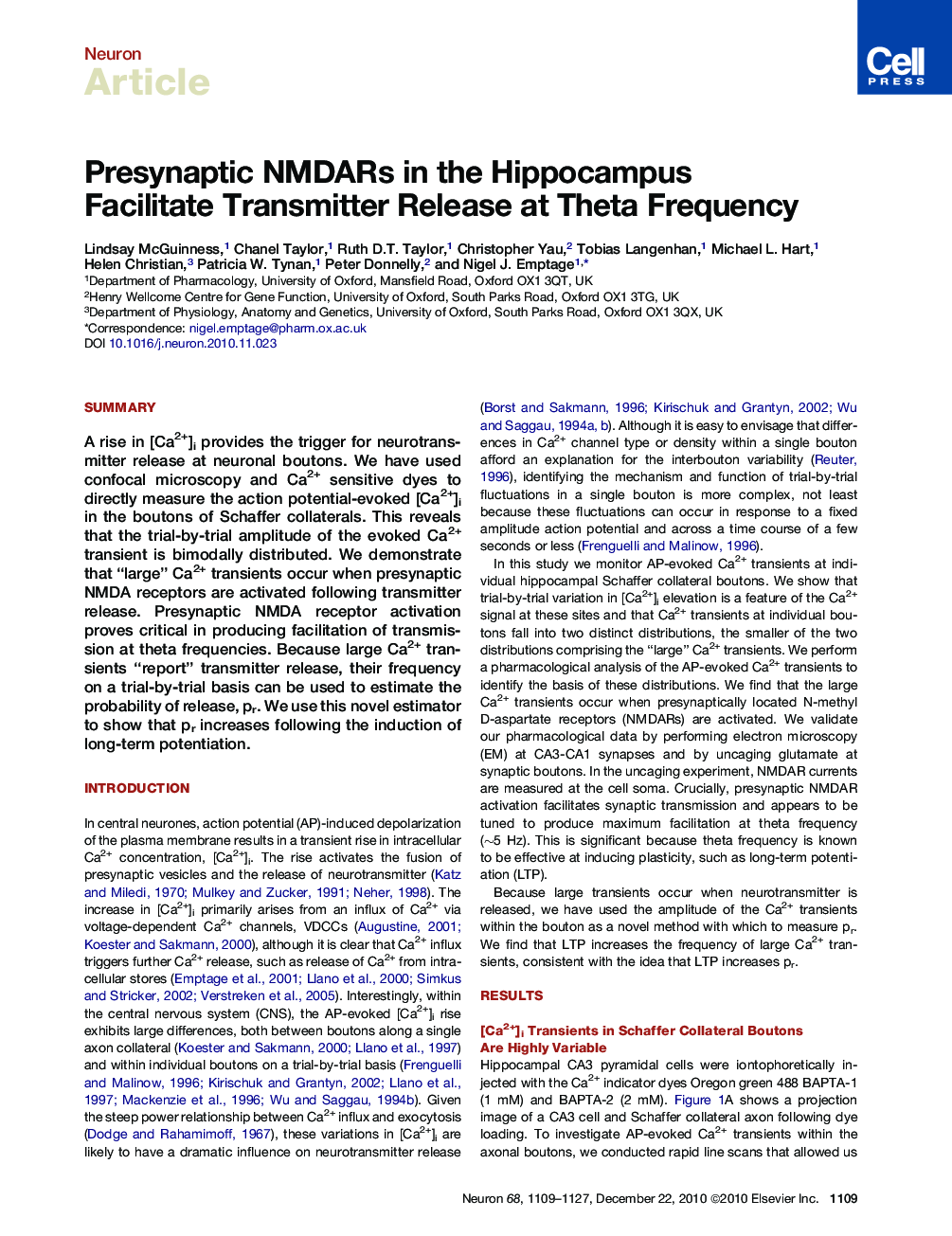| Article ID | Journal | Published Year | Pages | File Type |
|---|---|---|---|---|
| 4321860 | Neuron | 2010 | 19 Pages |
SummaryA rise in [Ca2+]i provides the trigger for neurotransmitter release at neuronal boutons. We have used confocal microscopy and Ca2+ sensitive dyes to directly measure the action potential-evoked [Ca2+]i in the boutons of Schaffer collaterals. This reveals that the trial-by-trial amplitude of the evoked Ca2+ transient is bimodally distributed. We demonstrate that “large” Ca2+ transients occur when presynaptic NMDA receptors are activated following transmitter release. Presynaptic NMDA receptor activation proves critical in producing facilitation of transmission at theta frequencies. Because large Ca2+ transients “report” transmitter release, their frequency on a trial-by-trial basis can be used to estimate the probability of release, pr. We use this novel estimator to show that pr increases following the induction of long-term potentiation.
► NMDA receptors contribute to the AP-evoked Ca2+ rise at hippocampal boutons ► Presynaptic NMDA receptors are autoreceptors that facilitate transmitter release ► Glutamate photolysis at boutons produces a rapid NMDARu current ► Autoreceptor activation “reveals” that pr increases with the induction of LTP
